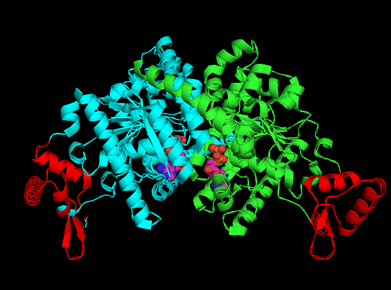Selected References

- Funnell, B.E. (2014) How to build segregation complexes in bacteria: Use bridges. Genes & Dev. 28:1140-1142. doi: 10.1101/gad.244517.114. Commentary article.
- Vecchiarelli, A.G., Havey, J.C., Ing, L.L., Wong, E. O.-Y, Waples, W.G. and Funnell, B.E. (2013) Dissection of the ATPase active site of P1 ParA reveals multiple active forms essential for plasmid partition. J. Biol. Chem. 288:17823-17831. doi: 10.1074/jbc.M113.469981
- Hwang, L.C., Vecchiarelli, A.G., Han, Y. -W., Mizuuchi, M., Harada, Y., Funnell, B.E. and Mizuuchi, K. (2013) ParA mediated plasmid partition driven by protein pattern self-organization. EMBO J. 32:1238-1249. doi: 10.1038/emboj.2013.34
- Vecchiarelli, A.G., Mizuuchi, K. and Funnell, B.E. (2012) Surfing biological surfaces: Exploiting the nucleoid for partition and transport in bacteria. Mol. Microbiol. 86:513-523, doi: 10.111/mmi.12017, MicroReview article
- Havey, J.C., Vecchiarelli, A.G. and Funnell, B.E. (2012) ATP-regulated interactions between P1 ParA, ParB and non-specific DNA that are stabilized by the plasmid partition site, parS. Nucl. Acids Res. 40:801-812. doi:10.1093/nar/gkr747
- Vecchiarelli. A.G., Han, Y.-W.,Tan, X., Mizuuchi, M., Ghirlando, R., Biertumpfel, C., Funnell, B.E., and Mizuuchi, K. (2010) ATP control of dynamic P1 ParA-DNA interactions: a key role for the nucleoid in plasmid partition. Mol. Microbiol. 78:78-91. doi:10.111/j.1365-2958.2010.07314.x
- Dunham, T. D., Xu, W., Funnell, B.E. and Schumacher, M.A. (2009) Structural basis for ADP-mediated transcriptional regulation by P1 and P7 ParA. EMBO Journal 28:1792-1802. doi:10.0138/emboj.2009.120. [The structure of a P1 ParA dimer, bound to ADP, is shown above at right, and is from this study]
- Funnell, B.E. (2008) Plasmid segregation and stability in bacteria. In "Biology and Significance of Plasmids: A multi-talk discussion of extrachromosomal elements in microorganisms, Clewell, D. (ed), Henry Stewart Talks (online at http://hstalks.com/bio). Review.
- Vecchiarelli, A.G, Schumacher, M.A. and Funnell, B.E. (2007) Assembly of P1 partition complexes involves multiple modes of protein-DNA recognition. J. Biol. Chem. 282:10944-10952.
- Schumacher, M.A. and Funnell, B.E. (2005). ParB-DNA structures reveal DNA-binding mechanism of partition complex formation. Nature 438:516-519. doi: 10.1038/nature04149.
- Funnell, B.E. and Slavcev, R.A. (2004) Partition systems of bacterial plasmids. In "Plasmid Biology", Funnell, B.E. and Phillips, G.J., eds., ASM Press, pp. 81-103. Book chapter/review article.
- Fung, E., Bouet, J-Y. and Funnell, B.E. (2001) Probing the ATP binding site of P1 ParA: Partition and repression have different requirements for ATP binding and hydrolysis. EMBO J. 20:4901-4911. doi: 10.1093/emboj/20.17.4901
- Surtees, J.A. and Funnell, B.E. (2001) The DNA binding domains of P1 ParB and the architecture of the P1 plasmid partition complex. J. Biol. Chem. 274:12385-12394. doi:10.1074/jbc.M009370200
- Erdmann, N., Petroff, T. and B.E. Funnell (1999). Intracellular localization of P1 ParB protein is dependent on ParA and parS. Proc. Natl. Acad. Sci. USA 96: 14905-14910.

